Crowds locked out of Anzac Day Dawn Service, veterans on parade as march returns
Hundreds returned to Melbourne’s Anzac Day commemorations after COVID marred 2020’s tributes — but some were locked out.
Victoria
Don't miss out on the headlines from Victoria. Followed categories will be added to My News.
Crowds locked out of Melbourne’s Dawn Service have gathered outside fences surrounding the Shrine of Remembrance to mark Anzac Day.
Just 1400 people snagged a ticket to the moving service with the crowd cap forcing others to line the temporarily fencing erected to help control numbers.
Following the dawn service, rows of servicemen and women marched down St Kilda Rd, in a welcome return to traditional commemorations after last year’s events were scuppered by coronavirus restrictions.
Waltzing Matilda blared from the bagpipes as a smaller than usual crowd watched on, clapping and cheering as the veterans walked past.
“I love you, Dad,” one woman screamed to an ex-serviceman as he marched.
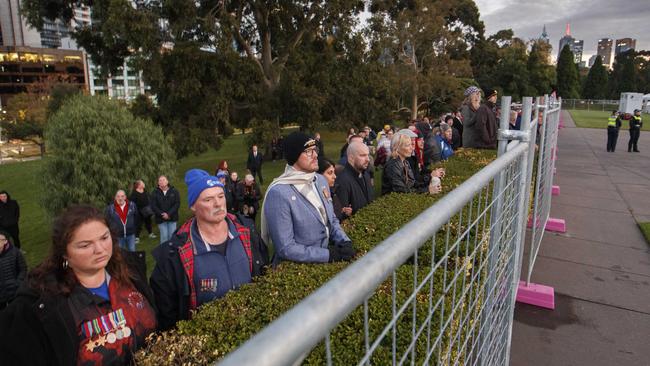
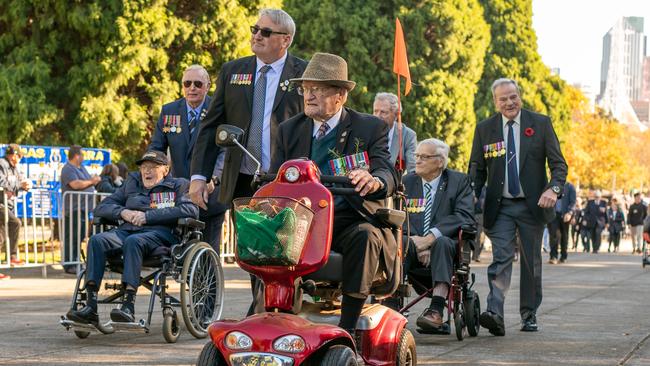
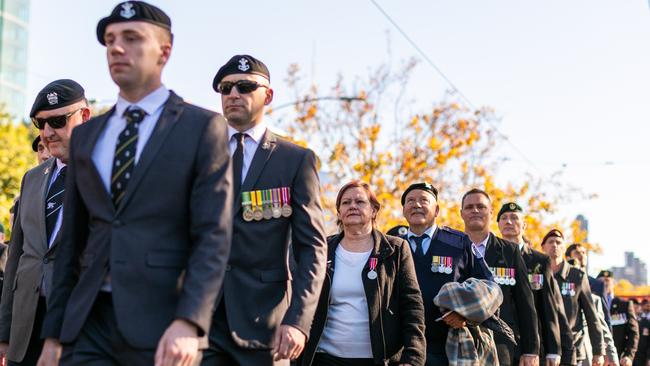
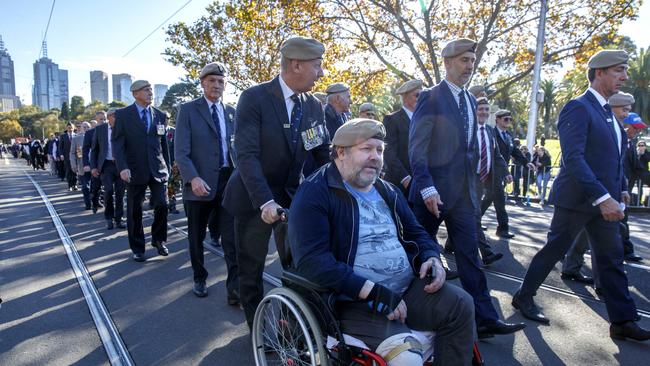
Jasmine Susic, 22, was among the crowd and said she always found the Anzac Day march an unforgettable experience, despite having no immediate family who served in armed conflict.
“It is very moving,” she said.
“You don’t really find it moving until you come here and you see people marching and celebrating what (the servicemen and women) have achieved for us.
“The notion of getting together again and connecting physically over such a special occasion brings a lot of people together.”
While the low turnout was expected, RSL Victoria chief executive Jamie Twidale said people were commemorating Anzac Day in different ways due to the ongoing risk of COVID-19.
With up to 8000 allowed to march, just 1736 had registered before the event.
— Replay the Anzac Day March and Commemoration at the Shrine of Remembrance below
“We think the main reason people are staying away is they have chosen to commemorate locally and COVID still creates a little doubt,” Mr Twidale said.
“We have tried to put the health and safety of veterans first in all that we have done in the last couple of months, and we hope everyone has a great Anzac Day.”
While he would have liked to see more people attend the march, Mr Twidale said the most important thing was that people honoured the occasion, in whatever way they could.
“It’s OK to commemorate locally, it’s OK to commemorate from home, really what’s important is that you commemorate.”
“Anyone who is still feeling a bit nervous about COVID, make your own judgments, do what you think is best if you do decide to turn up to the city march, (know that) every precaution has been taken.”
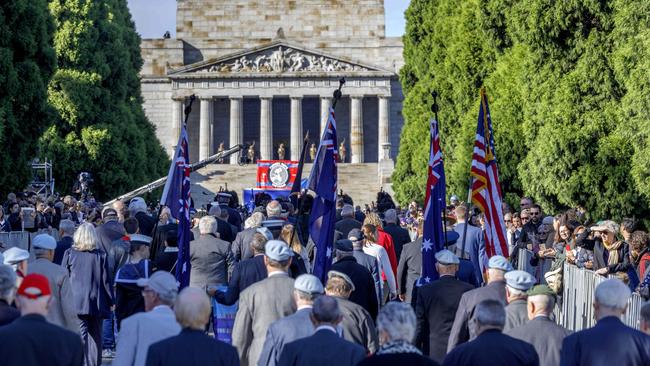
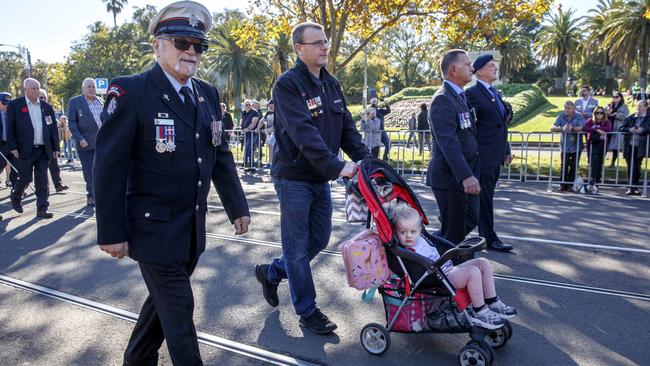
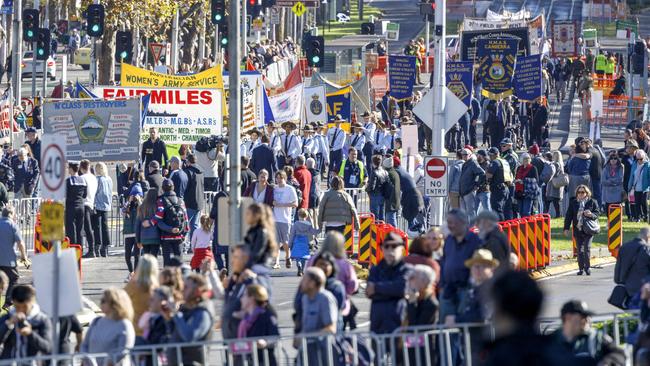
Typically, current serving ADF members, veterans, allies and descendants march in their squadron, but this year’s order was slightly different, with participants marching together in groups allocated by their era of service.
Keeping with tradition, current and ex-service members of the navy, army and air force led each group, followed by veterans from allied forces, then descendants at the back of the group.
Students from St Michael’s Grammar School in St Kilda have also joined the march, after the school was approached by veterans of the 13th battalion that served in WWII.
The battalion was formed in the early 1940s in barracks located across the road from the school.
“The remaining survivors approached the school to say ‘there are not many of us left’,” teacher and ex-serviceman Bruce Sampson said.
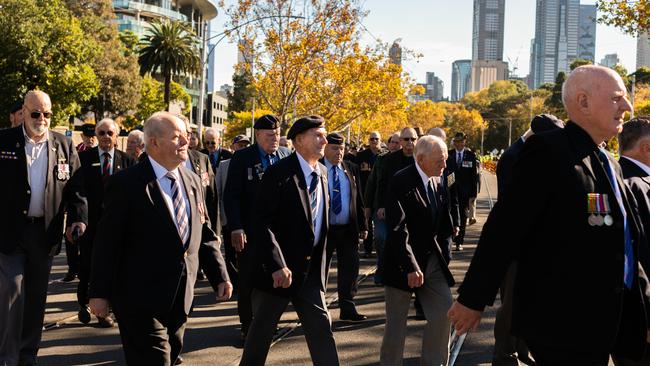
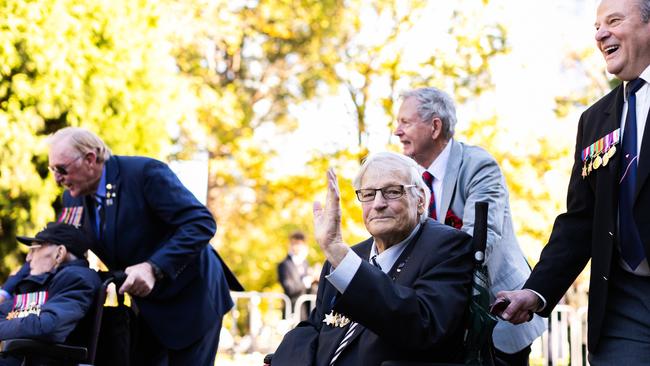
“(They said) we would like your year 12s to parade it for us, because year 12s are forever the same age as us when we enlisted. They are always about 18, the same age that we joined up.”
School vice-captain Zac, who wore the medals of one of the soldiers who served in the battalion, said it was “really quite an honour”.
Mr Sampson is a third-generation Australian veteran who served from 1983 to 2001. His son joined the Defence Force last year, so Sunday’s march was “particularly important this year.”
He said he was thrilled to be marching again after COVID-19 cancelled last year’s commemorations.
“It is just so nice to be back and see people around,” he said.
This year’s march also recognised the RAAF’s 100th anniversary, which was given special recognition at a commemorative service.
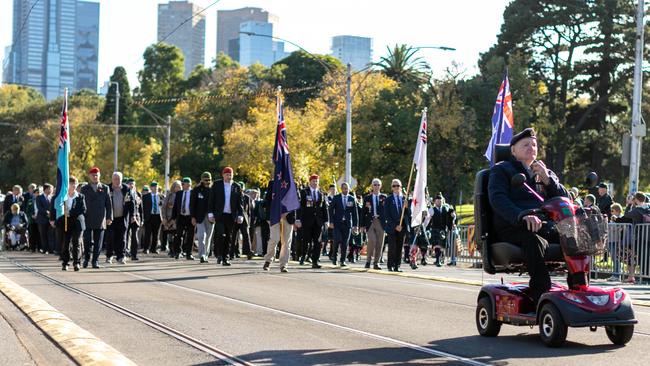
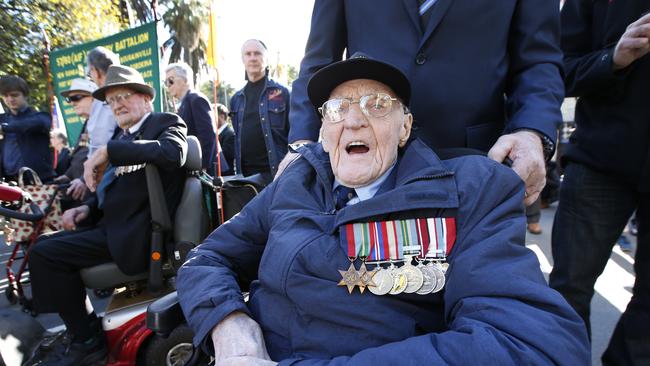
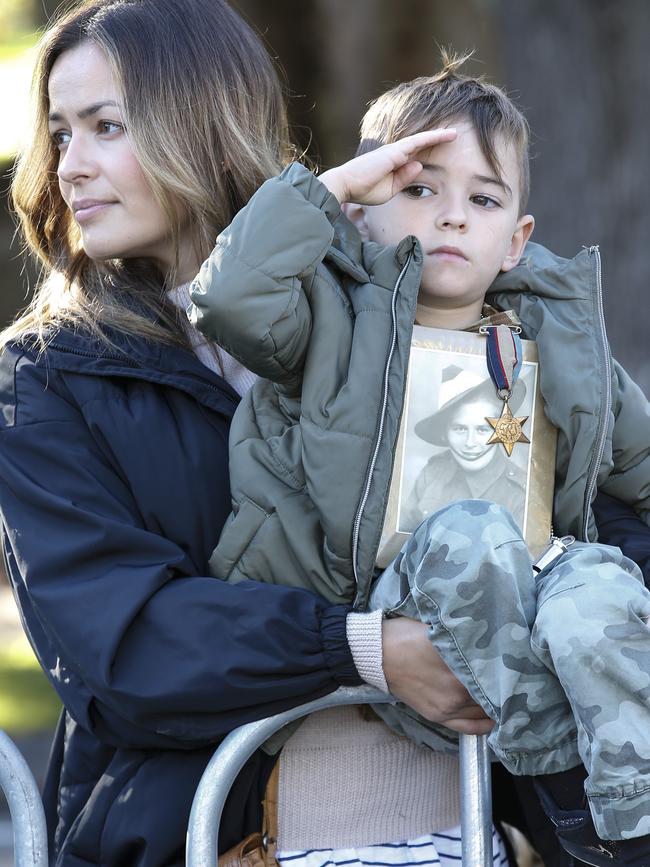
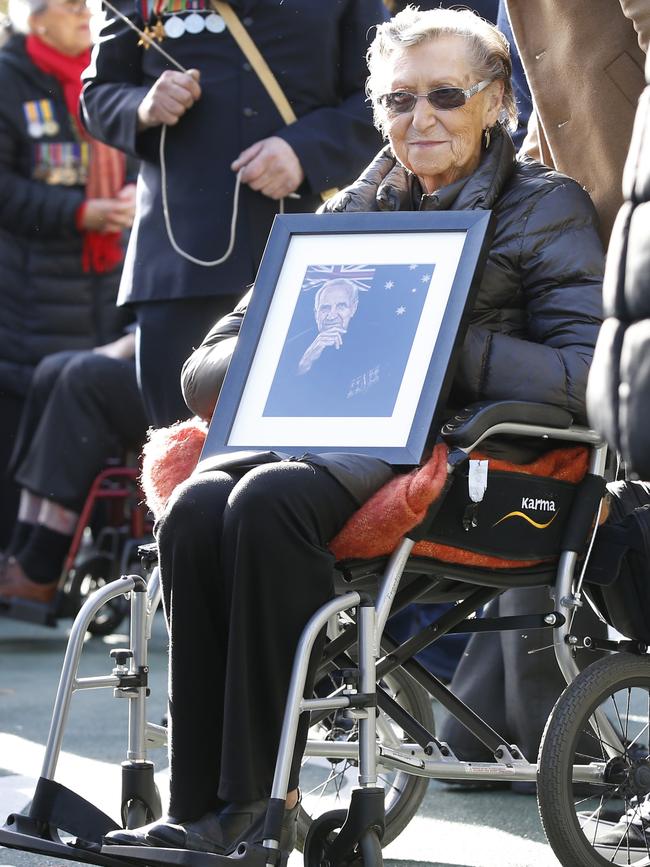
RAAF veteran Max McGregor spoke of the longstanding legacy of the air force, noting it had served in every major Australian conflict since its formation over a century ago, including the Korean War, often referred to as the “forgotten war”.
“Today’s air force is a formidable world class force and something we can all be proud of,” he said.
Mr McGregor said he hoped serving defence personnel would never be subjected to the horrors that soldiers faced in the past, adding Anzac Day should not be viewed as a “celebration” of war.
“I sincerely hope that no future generation of Australians will have to defend our country from an attack nor be involved in overseas military action,” he said.
“My hope is just that, a hope. However, I know that if called upon, the members of the Australian Defence Force will commit themselves with great courage and commitment as they did in the past.”
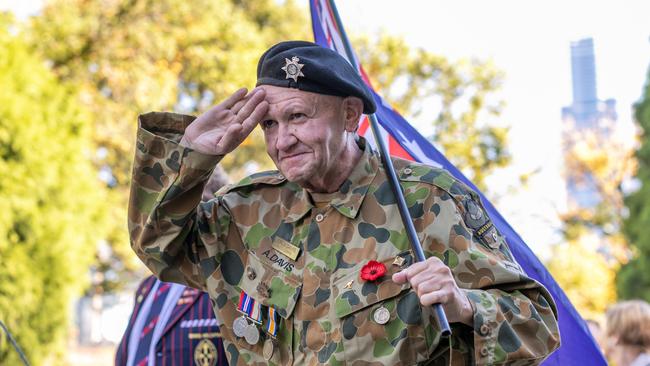
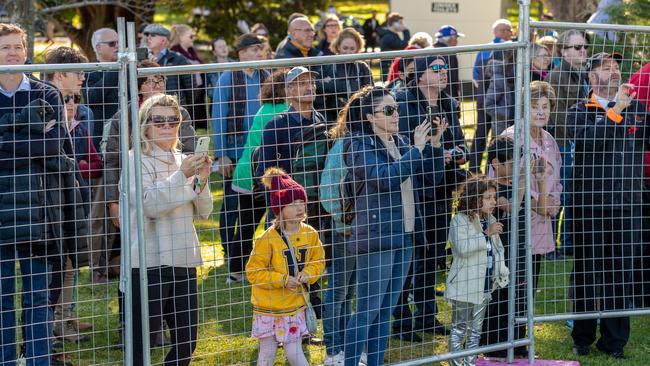
Around 300 Anzac Day events were planned across the state this year.
Commemorations continued following the service, as veterans descended on the nearby Young and Jackson hotel for a game of two-up.
The longstanding traditional Australian game, which is a slightly more refined version of heads and tails, is outlawed on every single day except Anzac Day.
The pub, located just opposite Flinders Street Station, was just one of a small number of venues hosting the game this year in Melbourne.
Punters queued around the block to try their luck, including 29-year-old Lucas Mason, who has been coming to the pub every Anzac Day over the past decade.
Wearing the medals of his grandfather, who served in WWII, the 29-year-old said, “I just like the spectacle (of the game). People get very into it, (there are) a lot of people shouting ‘heads-and-tails’ on each side of the room.”
He said the game’s historic ties with the military service and the fact it was legal only one day of the year were made it so special.
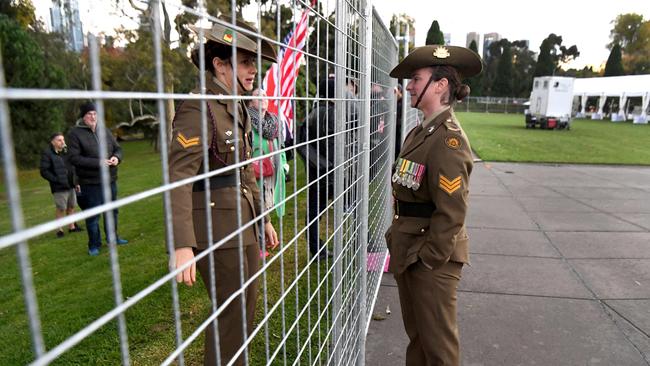
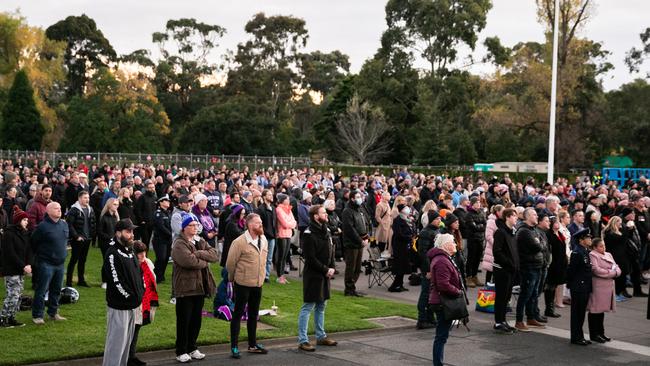
HUNDREDS PAY TRIBUTE AT FULL-CAPACITY DAWN SERVICE
Hundreds of people have paid their respects to Australia’s service men and women at Melbourne’s Shrine of Remembrance Dawn Service in a sea of poppies, rosemary, gloves and beanies.
The crowd at this year’s booked-out service was capped to meet COVID-19 safety precautions, with just 1400 available to attend.
In comparison, 2019’s Dawn Service saw 25,000 people attend, down from 2018 where 35,000 people attended.
A temporary fence was erected around the Shrine of Remembrance to enforce the crowd limit.
Despite the smaller numbers this year, the brevity and importance of Anzac Day and its commemorations were still felt among the crowd, which consisted of Victorians young and old.
— Replay the service from Victoria’s Shrine of Remembrance below
For some, including sergeant Arron Scott, being able to gather to commemorate Anzac Day like in previous years was extra special, after last year’s events were cancelled due to coronavirus restrictions.
“It is an honour to be here,” the serving Australian Defence Force member said.
But Sgt Scott, who was deployed to East Timor as part of peace keeping operations in 1999, said he was disappointed the service was capped, especially because crowd numbers were boosted for two AFL games this weekend.
“It’s a little bit upsetting that you can have 75,000 at the MCG for a footy game but only 1400 are here,” he said.
“But it is what it is … everyone is just really excited to at least have something to do for Anzac Day, regardless of what it is, no matter how big or small.”
Veteran Terry Goodley, who served more than 20 years as a cook in the Australian navy, said: “After last year, with COVID and everything else, it’s good to be back.
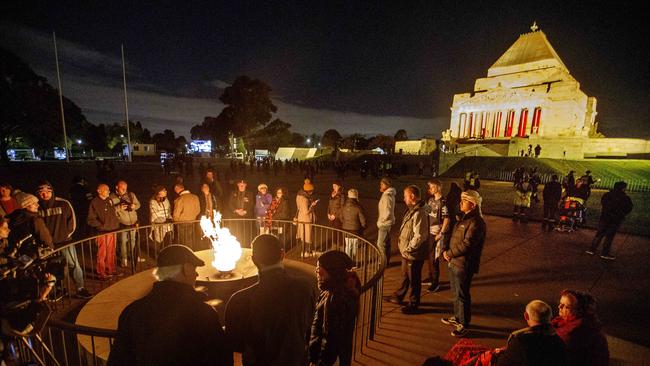
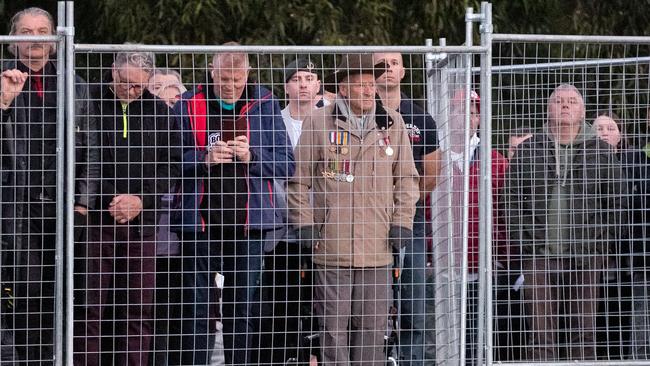
“We usually come into the dawn service, we are from the western suburbs and try and get in most years. It’s good to be here today even with the smaller crowd.”
Mr Goodley joined the navy as a junior cadet in 1966, and was drafted in HMAS Brisbane three years later, before serving in the Vietnam War.
Despite his own service, he said he was pausing on Anzac Day to honour the sacrifice of others.
“(It is a way to remember) the sacrifice they made in 1915, what happened at Gallipoli and the Western front and all those who gave their lives to make the world and Australia a better place,” he said.
Having received his first shot of the coronavirus vaccine, the 70-year-old was undeterred by ongoing concerns over the pandemic.
“People are still aware it’s out there and so am I but with a smaller crowd and an outdoor event it is probably a bit safer then going to a supermarket or something like that. I’ve got no concerns at all … but I know there is a possibility of another episode, but it is what it is at this time.”
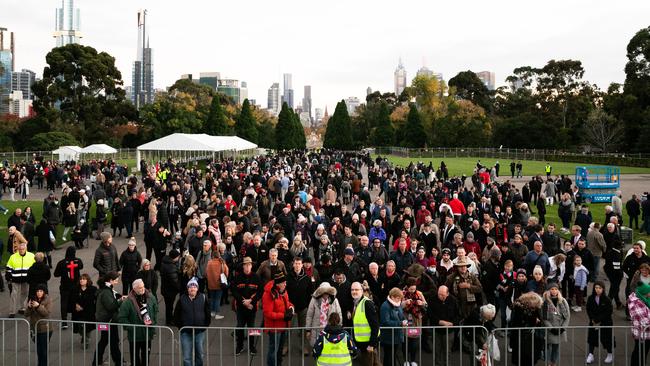
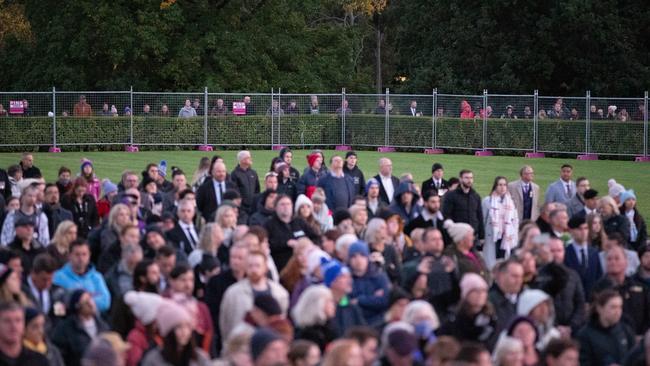
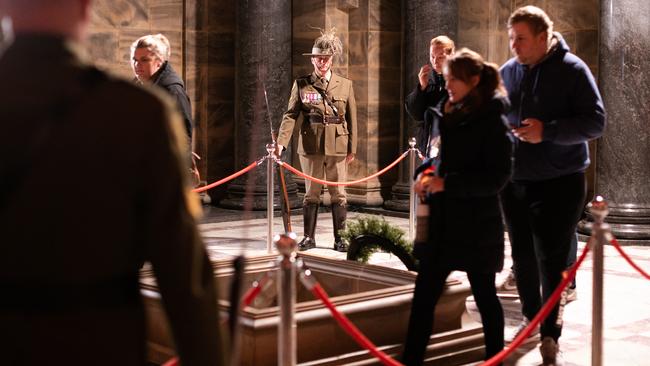
HOW DAWN SERVICE UNFOLDED
A lone G-note from a bugle signalled the start of the Dawn Service as The Symbol of Glory on the Shrine of Remembrance lit up in red.
RSL Victoria’s state president Dr Rob Webster took the stage to recite verses three and four of the Ode.
Dr Webster was called up for National Service in 1969 and served in Vietnam with 26 Transport Company, Royal Australian Army service Corps, from 1970 to 1971.
“We will remember them,” he said, before being echoed back from the crowd.
Bugler Corporal David Robinson then performed the Last Post.
A minute’s silence descended on the crowd, which was still engulfed in darkness.
“Lest we forget” was repeated.
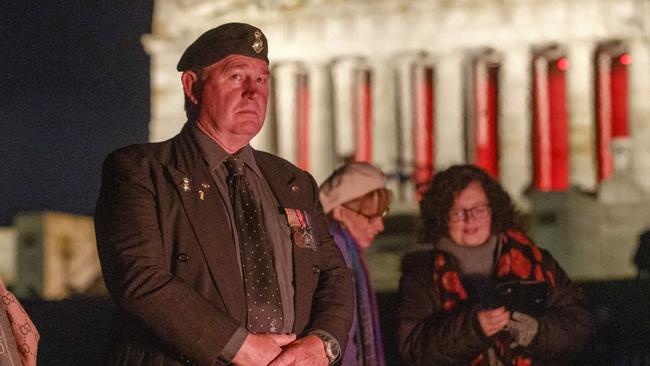
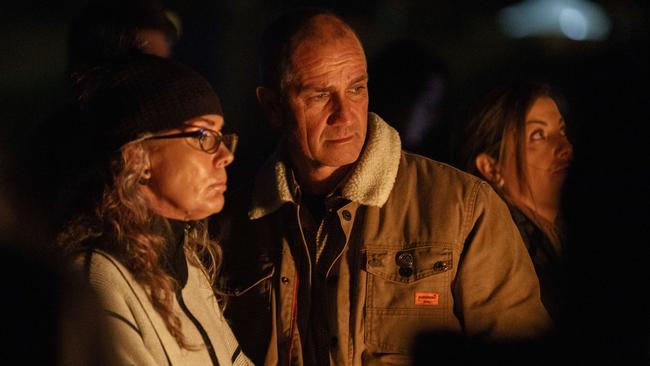
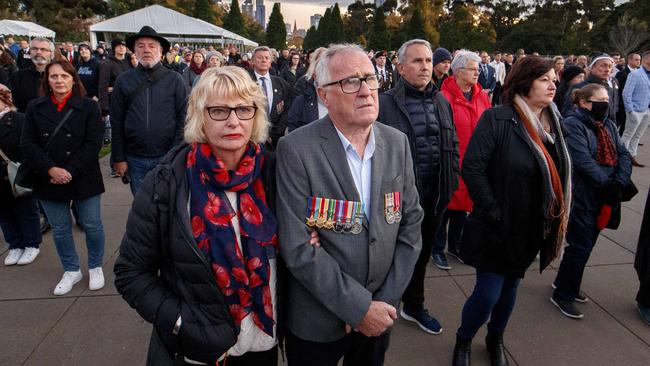
Governor Linda Dessau told the crowd that each Anzac Day Australians gathered to remember veterans who had “gifted us a legacy”.
“We admire of the valour and we mourn the loss of those who fought on in Gallipoli and throughout World War I, those who several decades later battled to fight back invading armies to save French and Belgium villages, or to stave of the threats in the Pacific, or later again in the jungles of Vietnam and since in deserts of wherever and whenever they have been called on to fight or keep the peace,” she said.
“Each Anzac Day we gather to remember, we know our remembering will not bring back those who died in the cause of duty, it won’t erase the pain of grieving families or sufficiently lighten the burden for those who were injured.”
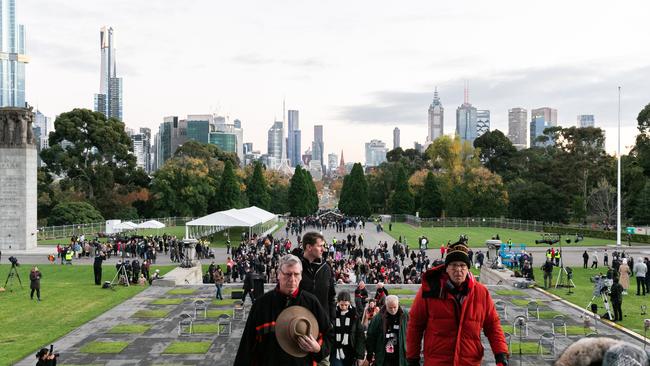
“But we remember because they have gifted us a legacy, their legacy is the character of our nation forged from their service.”
Australian military surgeon Major General Jeffrey Rosenfeld, who served on eight deployments, including to Rwanda, East Timor, Bougainville, Solomon Islands and Iraq, paid special tribute to the unsung heroes of war.
“I acknowledge the highly trained combat medics of today who treat our injured soldiers while under fire and have saved many lives,” he said.
“I think of the severely injured soldiers I operated on in Iraq. It is the greatest privilege of mine to have cared for our soldiers and those of our allies during war.
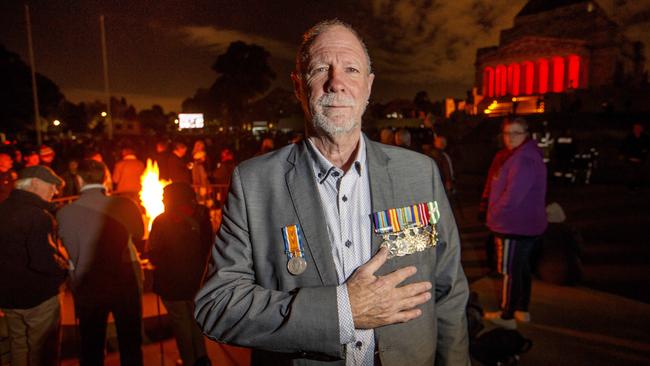
“This remembrance of our history forged in battle will make us all stronger as a nation in order to resist the forces of tyranny and terror that continue to affect our way of life.
Ms Dessau laid a wreath on behalf of all Victorians inside the Shrine of Remembrance, while veterans laid poppies to the tune of Australian Army band pipers.
MC Peter Meehan acknowledged the poppy’s historical symbolism as the serviceman acknowledged the fallen troops.
“The poppy became a sign of life, a sign of giving and a sign there was going to be a future.”
A lone piper concluded the service on top of the Shine of Remembrance as the sun began to rise.
Also attending Sunday’s service were Acting Premier James Merlino, Opposition Leader Michael O’Brien, and Lord Mayor Sally Capp, while Senator David Van represented the Federal Government.




